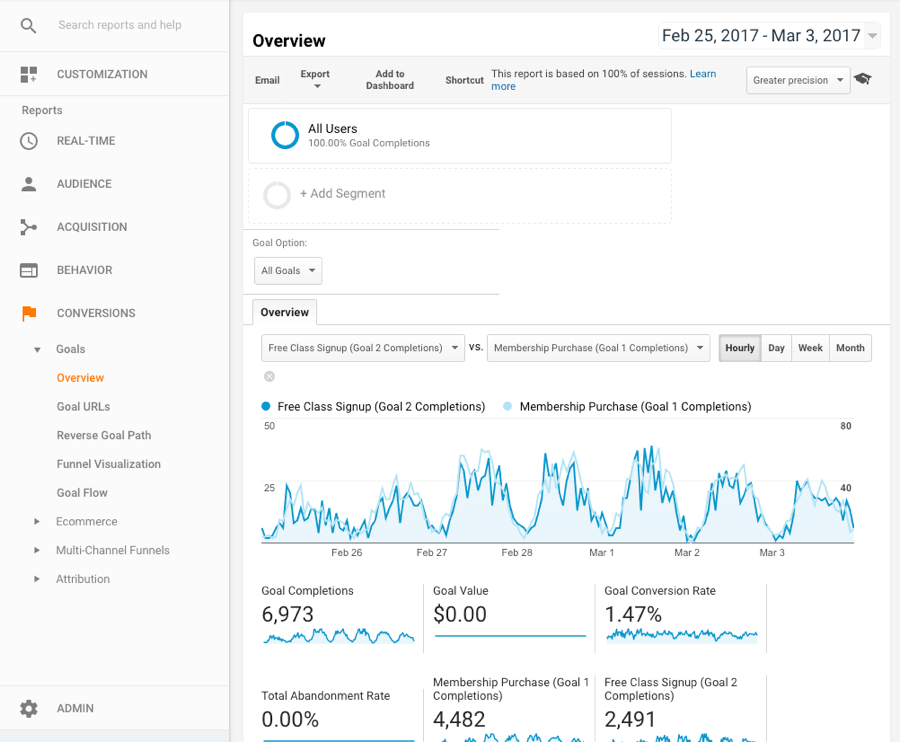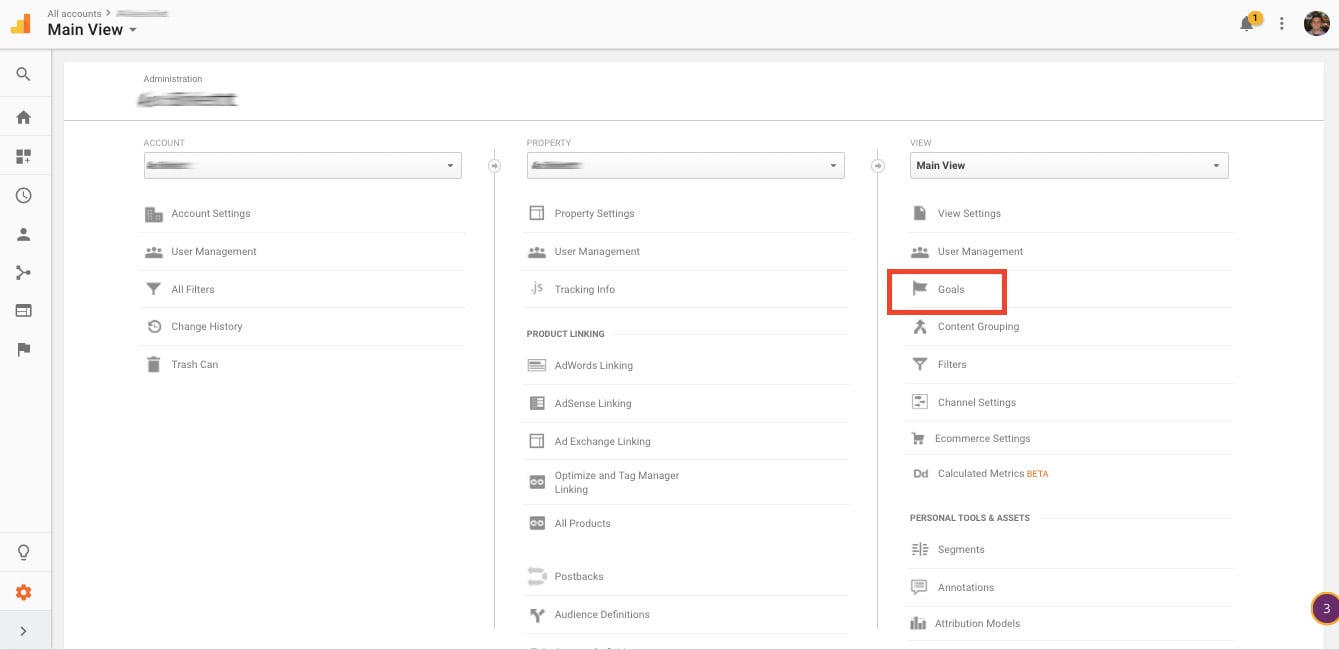Discover the Limitations of Google Analytics Goals: Revealing the Information Types That Remain Untrackable
As services progressively depend on data-driven decision-making, understanding the constraints of tools like Google Analytics ends up being vital. While Google Analytics Goals deal valuable insights into individual communications, there exist information types that avoid tracking, posturing challenges to an extensive understanding of individual habits. These untrackable information kinds elevate concerns regarding the precision and completeness of the analytics information that organizations heavily trust for their electronic strategies. Interested to uncover the surprise unseen areas in your data evaluation process?
Insufficient Customer Journey Tracking
Insufficient user trip monitoring within Google Analytics can prevent the capacity to precisely assess customer habits. When the user journey is not fully tracked, there are voids in the information that avoid a thorough understanding of exactly how individuals communicate with a website. This absence of insight can result in missed chances for optimization and renovations to the customer experience.
One common problem with incomplete user trip monitoring is the inability to see the complete path that individuals take previously completing a goal or leaving the site. Without this details, it is challenging to recognize where customers may be experiencing barriers or rubbing factors that prevent them from converting. In addition, incomplete tracking can obscure the influence of certain advertising and marketing initiatives or internet site adjustments on user actions.
To address this constraint, it is crucial to set up proper monitoring mechanisms within Google Analytics to record the whole customer journey. This might include establishing event monitoring, objective funnels, or making use of devices like Google Tag Manager to make sure that no essential interactions go unrecorded. By acquiring an extensive view of the customer journey, website owners can make more informed decisions to boost individual interaction and drive conversions.
Attribution Obstacles
Browsing with attribution obstacles in Google Analytics requires an extensive understanding of exactly how various touchpoints contribute to the total conversion procedure. Attribution difficulties emerge from the complexity of contemporary customer trips, where customers communicate with multiple networks prior to converting. Google Analytics provides numerous acknowledgment designs like first touch, last touch, and straight, each offering a various perspective on how credit report is designated to touchpoints along the conversion course. However, these models may not constantly precisely show truth effect of each touchpoint on the conversion.
One common attribution obstacle is the problem in associating conversions to the correct source, specifically in situations where customers connect with multiple networks prior to converting. This can lead to inaccuracies in establishing which advertising initiatives are driving one of the most conversions. Furthermore, cross-device tracking presents one more acknowledgment difficulty, as customers frequently switch between gadgets during their trip, making it testing to track their communications seamlessly. Marketers need to meticulously analyze and interpret attribution data to make enlightened decisions and maximize their advertising techniques efficiently.
Offline Conversions
Offered the difficulties linked with connecting conversions accurately in online networks, the measurement of offline conversions provides a considerable opportunity for marketing a knockout post professionals looking for a much more extensive understanding of their customers' journey. Offline conversions refer to activities that customers absorb the physical world, such as making purchases in brick-and-mortar stores or over the phone, going to events, or involving with printed materials - what data is google analytics goals unable to track. These conversions are crucial for services that operate both online and offline, as they provide important insights into the efficiency of advertising and marketing campaigns throughout numerous touchpoints
Tracking offline conversions commonly presented a considerable difficulty for online marketers, as it was challenging to attach these actions back to particular on the internet communications accurately. With improvements in technology, such as the combination of CRM systems, one-of-a-kind identifiers, and voucher codes, companies can now connect the space in between online and offline data to gain a much more all natural view of client habits. By efficiently determining offline conversions, marketing professionals can maximize their techniques, allocate resources more effectively, and ultimately enhance the total consumer experience.
Cross-Device Monitoring
Cross-device monitoring plays an essential role in recognizing the interconnected nature of customers' digital interactions throughout numerous tools. In today's omnichannel world, where customers flawlessly change between tablets, desktop computers, and smart devices, tracking their actions throughout these tools is important for marketing professionals to gain an extensive sight of their customer journey.

Furthermore, personal privacy issues and policies such as GDPR and CCPA click to investigate have additionally complicated cross-device tracking. With individuals requiring more control over their information and raised restrictions on tracking innovations, online marketers need to find cutting-edge and privacy-compliant means to link individual interactions throughout gadgets.
Dynamic Web Content Involvement
Comprehending user engagement with vibrant content is critical in optimizing electronic advertising and marketing strategies for enhanced audience communication. Dynamic web content describes internet site components that transform based on individual actions, preferences, or various other factors, providing a personalized experience. Tracking user interactions with dynamic web content postures difficulties for standard analytics devices like Google Analytics.
While Google Analytics can track standard communications like clicks and web page sights, it might have a hard time to capture even more nuanced engagements look what i found within vibrant web content. what data is google analytics goals unable to track. Metrics such as time spent on details dynamic components, hover activities, or communications within pop-ups are usually not quickly measurable utilizing basic monitoring approaches. This limitation hinders marketers' ability to fully realize exactly how users are engaging with vibrant content and customize their strategies accordingly

Final Thought
In verdict, Google Analytics goals have restrictions in tracking insufficient customer trips, connecting conversions precisely, catching offline conversions, tracking cross-device interactions, and measuring vibrant web content interaction. These restraints highlight the significance of exploring added monitoring techniques and devices to acquire an extra comprehensive understanding of individual actions and conversions past what Google Analytics can give.
While Google Analytics Goals deal beneficial insights right into individual interactions, there exist information types that elude tracking, posing challenges to an extensive understanding of user behavior.Insufficient user journey monitoring within Google Analytics can prevent the ability to accurately assess individual behavior. When the individual trip is not fully tracked, there are spaces in the information that stop a thorough understanding of exactly how users connect with a website.One usual issue with insufficient individual trip monitoring is the inability to see the complete path that individuals take before finishing a goal or leaving the site. By getting an extensive sight of the user journey, internet site proprietors can make more informed choices to improve customer involvement and drive conversions.